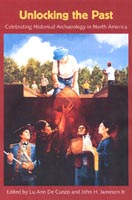New York City
Diana diZerega Wall and Nan A. Rothschild

Figure
The city's natural setting played an important role in both its original European settlement and its ultimate transformation into a world-class city. The Dutch claimed New Netherland in the early seventeenth century because of the money they hoped to make in the fur trade there. They traded with Native Americans near today's Albany, about 150 miles up the Hudson River. The Dutch settled New Amsterdam at the mouth of the river both to protect this trade from European competitors and to serve as a port for the ocean-going vessels that would take the furs to the Netherlands. Its site was one of the finest natural ports in North America for ships in use from the seventeenth through the mid-twentieth centuries. Prior to the mid-nineteenth century, the port was located on the East River, which rarely froze over in winter, and the mass of Manhattan Island protected the smaller wooden ships from the harsh westerly winds that threatened them.
Modern archaeology began in New York City in 1979 when the authors worked together in directing the city's first large-scale excavation on the block where New York's first city hall--the Dutch Stadt Huys--had stood in the seventeenth century. The block lay on fast land along the East River shore, before the addition of three blocks of landfill turned it into an inland one. This excavation became the test case for archaeology in New York. The big question was whether any important archaeological remains could possibly survive at the site after 350 years of development and re-development in the Wall Street district, one of the most heavily urbanized parts of the world. Fortunately for the future of archaeology in New York (and much to our relief), we found not only two tons of artifacts dating from the seventeenth through the nineteenth centuries, but the foundation walls and artifacts from the King's House Tavern. Francis Lovelace, the second governor of the English Province of New York, had ordered the tavern built in 1670, and later, in the 1690s, it had served as a temporary city hall.
Naturally, it would be ideal if archaeologists working in New York could choose their sites because of the research questions they want to answer. But even though they have to use an opportunistic approach and take advantage of plans for modern development to be able to dig, the study of New York City has provided insight into the lives of many different kinds of people who have contributed to the city's history. We hope that as time goes by, we can apply new, more sophisticated techniques to these sites, so that we can learn more about the lives of the people here and how they adapted to and modified their urban environment.
Diana diZerega Wall is Professor of Anthropology at the City College of the City University of New York.
Nan A. Rothschild is Ann Whitney Olin Professor of Anthropology at Barnard College, Columbia University.
